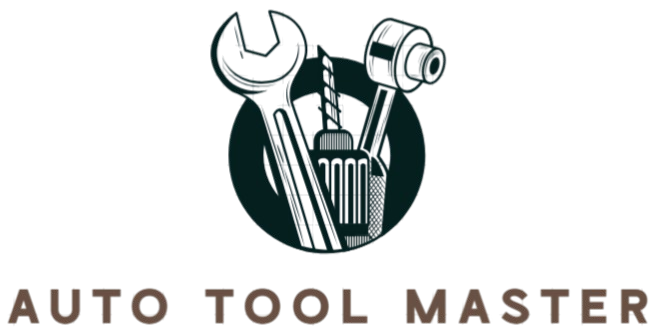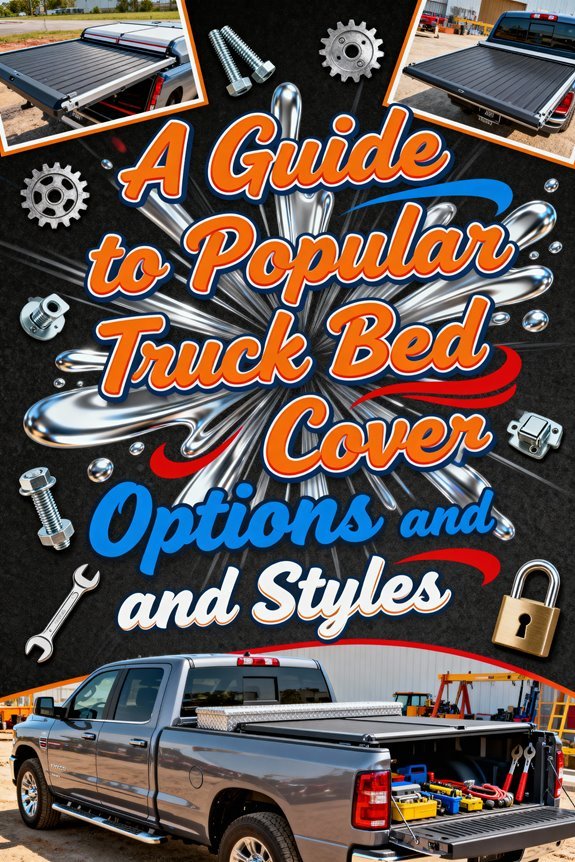Clean your tonneau cover monthly by first removing loose debris with a soft brush or vacuum, then washing with mild car shampoo and lukewarm water using gentle circular motions. Rinse thoroughly with a garden hose and dry immediately with microfiber towels to prevent water spots. Apply material-specific protectants like WOLFSTEINS™ for vinyl or water-based sprays for fabric covers to combat UV damage. Inspect weatherstripping, lubricate hinges with silicone-based products, and check hardware monthly for tightness. These practices will extend your cover’s lifespan and maintain its waterproofing capabilities—discover complete maintenance techniques below.
Gathering the Right Tools and Supplies
Before you begin cleaning your truck’s tonneau cover, assemble the essential tools that’ll protect the material while removing dirt effectively. Your tool organization should include a vacuum cleaner, soft-bristled brush, microfiber cloths, and a garden hose with adjustable spray nozzle. For hard-to-reach areas, gather sponges and applicator pads that won’t scratch the surface.
Cleaner selection depends on your cover’s material type. Vinyl covers require specialized formulas like WOLFSTEINS™ Pro-Series or LEER Tonneau Cleaner, both offering UV protection and biodegradable compositions. Fabric covers need water-based sprays that maintain waterproofing properties. Stock protective conditioners, UV protectant sprays, and fabric guard products for post-cleaning treatment. Always test products on inconspicuous areas first. Keep buckets ready for solution mixing, wear protective gloves, and guarantee adequate water access for thorough rinsing. For stubborn stains like bird droppings, prepare a vinegar and water solution to neutralize the acid before cleaning. When selecting cleaners, consider whether you have a hard or soft cover, as hard covers made from sturdy plastics or metals may tolerate different cleaning agents than soft fabric versions. During your cleaning routine, inspect the cover for tears or leaks that may require patching with repair kits to maintain proper weatherproofing.
Removing Loose Debris Before Washing
With your cleaning supplies organized, start the debris removal process by positioning your truck in a shaded area where you’ll have adequate workspace around all sides of the tonneau cover. Begin by identifying accumulation points—edges, corners, and hinge areas where debris types like leaves, branches, and dirt collect most heavily. Use a soft brush or vacuum cleaner to remove loose material before introducing moisture. For folded sections, carefully unroll to access trapped debris. Environmental factors such as recent storms or seasonal changes dictate cleaning frequency and intensity. If using a pressure washer, maintain proper nozzle distance to prevent material damage. Work systematically from one end to the other, ensuring complete debris removal before proceeding to the washing phase. Remove accumulated environmental pollutants like smog and industrial chemicals that can corrode the material if left on the surface. For covers with robust aluminum frames, pay special attention to the frame components where dirt can accumulate along the rails and hinges. Ensure the cover is securely closed during any washing process to prevent water and soap from entering and damaging internal mechanisms.
Washing Your Tonneau Cover Properly
Once you’ve cleared all loose debris, prepare your washing solution by mixing mild car shampoo with lukewarm water in a clean bucket—avoid harsh detergents or household cleaners that can degrade your tonneau cover’s material. Use soft cloths or sponges to scrub the cover in small sections, applying gentle circular motions to lift dirt without scratching. For best results, maintain a washing frequency of every two weeks or after exposure to heavy road grime. Rinse thoroughly with a garden hose using gentle spray pressure, ensuring all soap residue is removed—leftover cleaning solutions attract dirt and cause streaking. Complete multiple rinses if necessary. Immediately dry the surface with microfiber towels to prevent water spots and mineral deposits from forming on your cover’s finish. When dealing with stubborn grime, you can scrub with a soft brush to loosen embedded dirt without damaging the surface. After washing, consider applying UV-blocking sprays like 303 Aerospace Protectant to shield your cover from sun damage and weather exposure. Regular cleaning also helps maintain your cover’s locking mechanisms, which are essential for preventing unauthorized access to your truck bed.
Tackling Stubborn Stains and Water Spots
Even with regular washing, your tonneau cover will encounter stubborn contaminants that require targeted treatment beyond standard cleaning procedures. For tree sap, apply a specialized remover and let it sit 10–15 minutes before gently scrubbing with a microfiber cloth. Water spots respond well to detailing sprays, while stubborn stains may need a vinegar-water solution. Oil and grease require all-purpose cleaners applied directly to affected areas, allowing 10 minutes to penetrate before scrubbing. Bird droppings demand immediate attention—spray appropriate cleaners and wipe promptly to prevent acidic damage. Hardened deposits may need rubbing alcohol. Mud softens with mild detergent and warm water before scrubbing. Regular inspection of your cover’s seals and seams helps prevent water intrusion that can lead to staining and damage over time. Understanding your cover’s material composition helps you select cleaning products that won’t damage the surface or void warranties. Proper maintenance not only preserves your cover’s appearance but also protects your investment by maintaining features that enhance resale value. These spot cleaning techniques, combined with stain prevention tips like prompt treatment and thorough rinsing, maintain your cover’s appearance and longevity.
Drying and Protecting the Surface
After removing all stains and contaminants, proper drying becomes your next priority to prevent water spots and prepare the surface for protection. Use microfiber towels to absorb water efficiently without leaving streaks, or employ compressed air to blow off excess moisture from crevices. Focus on pooled water areas first, then move the vehicle to shade to slow evaporation and minimize spotting. Once completely dry, apply protective products suited to your cover’s material. Water-based dressings work well for vinyl, offering UV protection. Products like Truck Gear by LINE-X Total Care UV Protectant or HydroShield Ceramic SiO2 technology provide enhanced durability. Apply protectant to a microfiber towel, distribute evenly across the surface, then lightly buff for a uniform finish that shields against environmental damage. For additional moisture protection during storage or travel, consider placing super absorbent towels along the trim edges where water typically intrudes. While tonneau covers offer high water resistance, maintaining EPDM rubber seals through regular cleaning helps minimize minor leaks that can occur at corners and edges. Regular inspection of weatherstripping alignment ensures continued protection against rain and dust intrusion between maintenance sessions.
Regular Maintenance Best Practices
While protecting your tonneau cover during cleaning establishes a strong foundation, maintaining its condition between washes requires consistent attention to weight limits, chemical selection, and operational habits. Implement preventive measures by inspecting straps, buckles, and sealing edges monthly for wear or separation. Never leave heavy gear on your cover—distribute necessary loads evenly and consult your manufacturer’s manual for specific weight ratings. Establish a maintenance schedule that includes hand washing with automotive-grade soap, avoiding silicone-based cleaners like Armor All on non-vinyl surfaces. For vinyl covers, use specially formulated vinyl cleaners to prevent drying and discoloration. Keep your cover closed when not hauling cargo, firmly seal all fastening systems, and apply protective treatments like COVER CARE® Cleaner to combat UV damage and maintain material flexibility. Clean and lubricate hinges, tracks, and locks regularly using dry, automotive-grade spray lubricants to ensure smooth operation and long-term reliability. Proper maintenance practices directly impact how long your cover will last, with soft covers lasting 3 to 7 years and hard covers potentially serving you for 5 to 20 years. Inspect integrated locking systems periodically to verify they engage properly and protect your cargo from theft and unauthorized access.
Caring for Moving Parts and Hardware
Because tonneau cover hardware endures constant vibration, temperature fluctuations, and mechanical stress, you’ll need to inspect and maintain these components with the same diligence you apply to the cover material itself. Conduct hardware inspection monthly, checking all bolts, clamps, and screws for tightness while avoiding overtightening that damages threads. Use a torque wrench when manufacturer specifications are available. Clean moving parts with mild soap and water, avoiding harsh chemicals and abrasive tools that degrade seals or finishes. Apply proper lubrication techniques by using silicone-based lubricants on hinges, torsion bars, and latch mechanisms—never petroleum-based products that attract dirt or compromise rubber components. Adjust cover tension and realign rails promptly when misalignment occurs. Protect metal hardware with approved rust inhibitors and rinse road salts immediately to prevent corrosion. Pay special attention to track and clamp connections on the bed rails, as these mounting points require secure engagement to maintain proper cover function. When installing aftermarket components like nerf bars alongside your tonneau cover, select products made from durable materials such as 304 stainless steel or carbon steel that resist corrosion in harsh conditions. Regularly slide and fully close the cover to ensure it operates smoothly, as this consistent operation check helps identify potential issues before they require costly repairs.
Addressing Common Problems and Damage
Even with regular maintenance, tonneau covers develop problems that require immediate attention to prevent minor issues from escalating into costly damage. Water leaks typically stem from seal degradation around edges and tailgates—inspect and replace worn weather seals immediately for corrosion prevention. Vinyl tears compromise waterproofing; patch small holes with repair kits or pursue cover replacement for extensive damage. Installation issues create gaps that allow moisture penetration; verify your cover’s model-specific fit and tighten bed rails to manufacturer specifications. Surface scratches on fiberglass or aluminum covers expose underlying materials to rust—address promptly through professional assessment. Operating problems from dirt accumulation or stuck mechanisms require thorough cleaning with manufacturer-approved products. Flapping noises signal loose or broken components like clamps and bolts that need tightening or replacement. For persistent leaks, consider adding additional weather stripping along the truck bed edges to improve the seal between the cover and bed surface. Small gaps that compromise weatherproofing can be effectively filled using silicone sealants as a preventive measure against water intrusion. Regular inspections catch deterioration early, preventing structural failure and protecting your truck bed investment.

